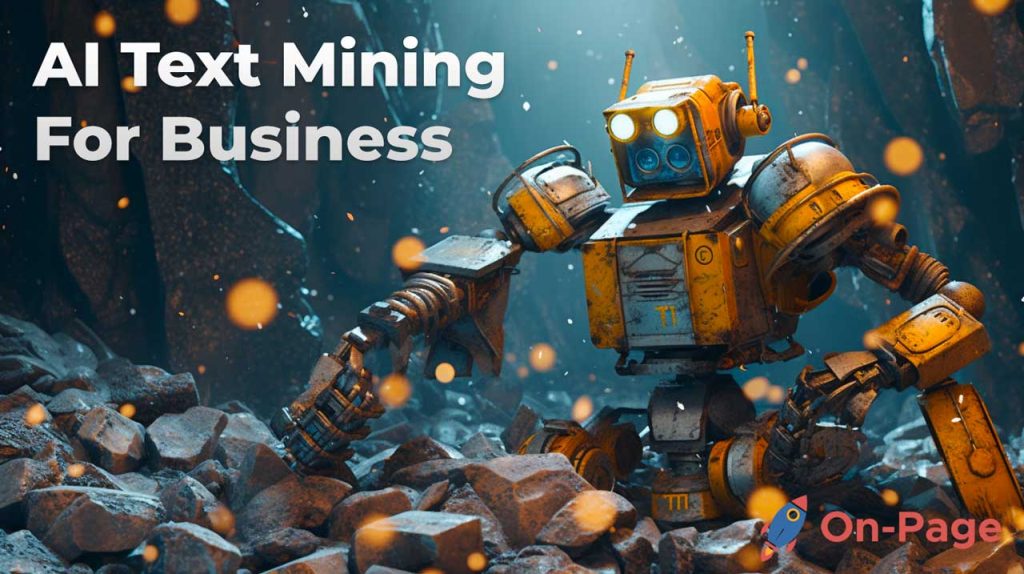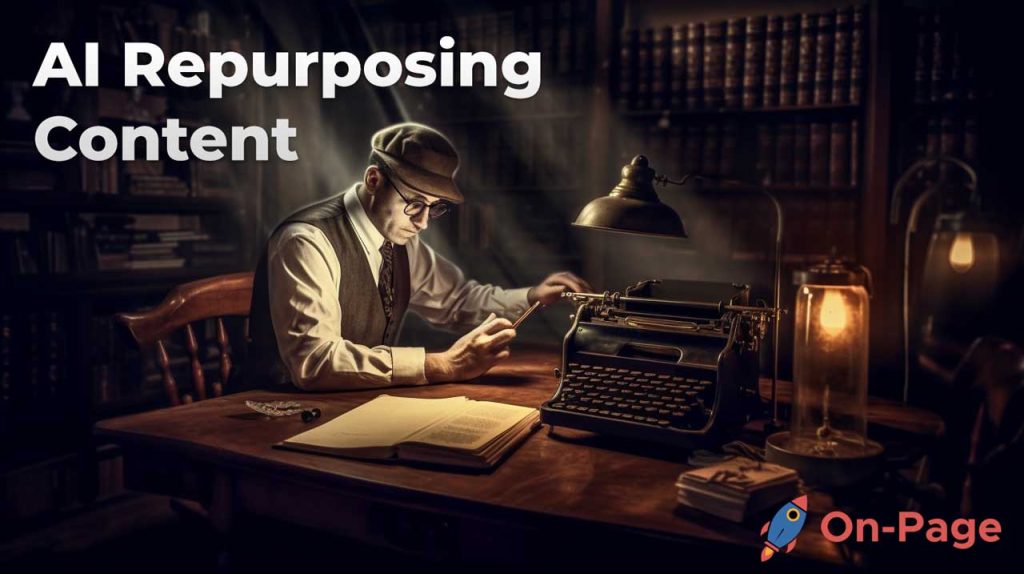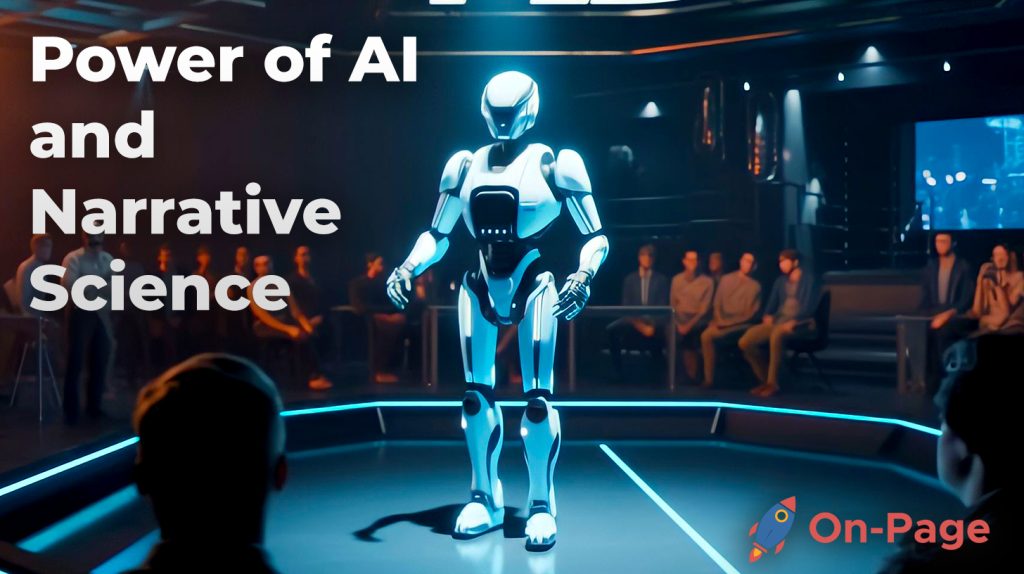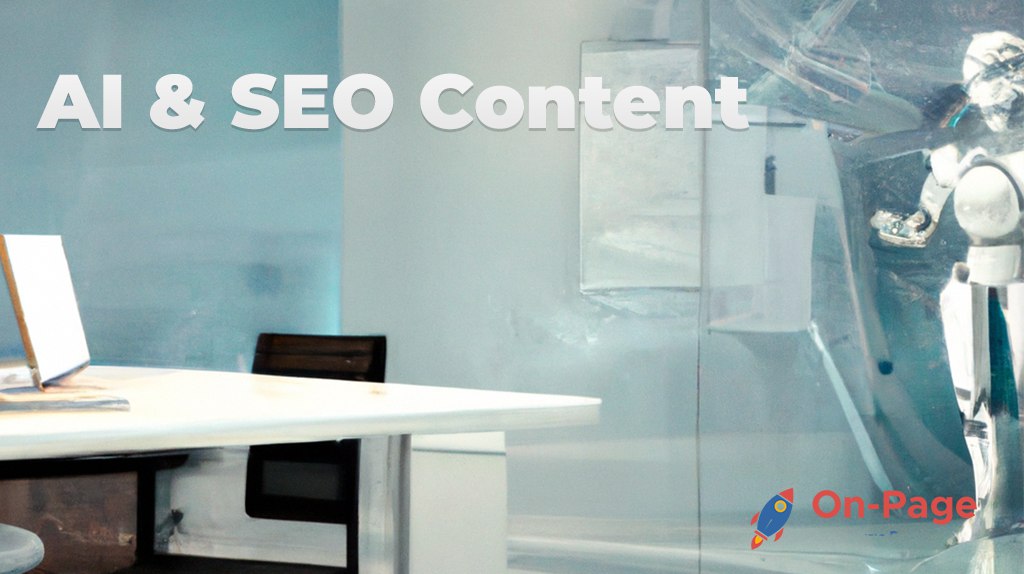Unlocking the Potential of AI and Storyboarding for Creative Projects
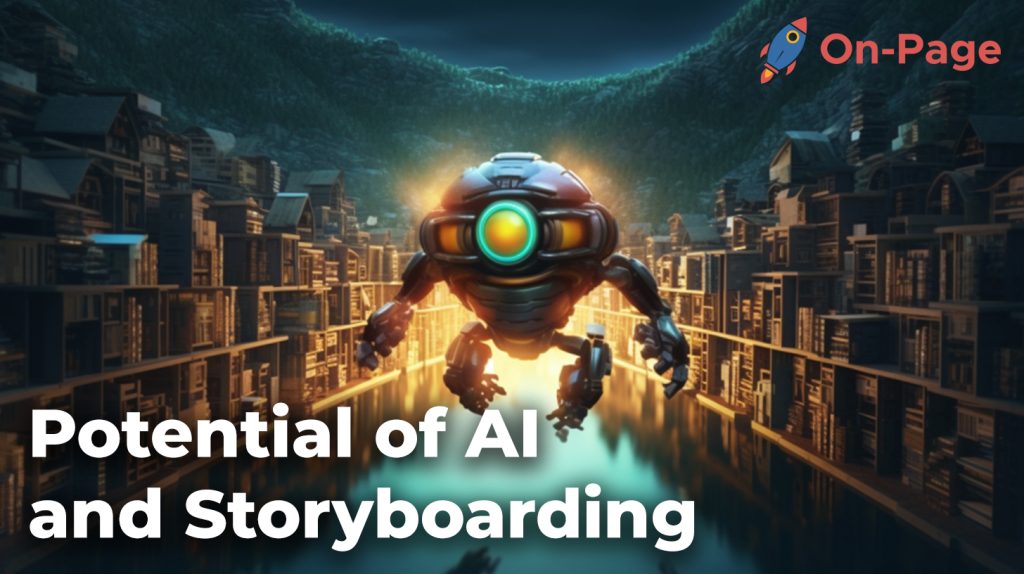
Imagine having a creative sidekick that not only grasps your vision but can also generate unique ideas, storyboard your project, and bring your artistic dreams to life with just a few clicks. Welcome to the revolutionizing world of AI and storyboarding in creative projects! This cutting-edge innovation is transforming the way we think, create, and collaborate, making it possible for you to produce artistic masterpieces that were once thought impossible. Read on to discover how integrating powerful AI and storyboarding into your workflow can unlock endless creative possibilities and redefine the boundaries of artistic expression.
AI is being used in Storyboarding to automate the manual storyboarding process and generate visually appealing storyboards in various styles. The use of AI can significantly save time on creative projects, allowing creators to focus on more pressing matters and unlocking the potential of AI for storytelling purposes. However, it is important to note that while AI-generated storyboards can enhance the creative process, they cannot fully replace the talent of a skilled storyboard artist.
What is Storyboarding?
Storyboarding is the process of visualizing a story and translating it into a series of images. It began as an animation technique, but it has grown to encompass several industries, including film, advertising, and marketing. The storyboard is similar to a comic book in that it consists of panels with illustrations or photographs accompanied by text or dialogue.
For example, when a filmmaker creates a new movie, they usually begin with a script that describes the dialogue, the setting, and the characters. A storyboard artist will then translate this text into a visual format by creating a sequence of drawings or illustrations that represent each shot or scene in the film. Each panel shows the camera angle, character positions, and other information necessary for filming.
Storyboarding is essential to help writers, directors, producers, and other creatives to visualize their projects before committing time and resources to production. It allows them to test different ideas and experiment with different approaches before investing significant resources like actors and camera equipment. By creating a visual representation of their vision upfront, they can discover inconsistencies in their story before spending money on actual production.
In many ways, you can think of storyboarding as sketching out blueprints for your creative project. Like an architect drafts plans for a building before construction begins, storyboarding serves as the blueprint for anything creative. This analogy also helps illustrate how central storyboarding is to creative projects – if you wouldn’t build or create without blueprints as an architect would never construct without blueprints; it’s equally unthinkable for storytellers not to storyboard out their vision beforehand.
Now that we understand what storyboard is let’s dive deeper into its role in creative projects.
- How can AI improve the storyboarding process?
- Write 3 scientific statistics about “AI and Storyboarding”:
- According to a Mordor Intelligence report, the global AI in the media and entertainment market is projected to grow at a CAGR of approximately 29% between 2020 and 2025, which indicates a significant increase in AI adoption across various creative fields, including storyboarding.
- A study published in IEEE Xplore in 2019 found that automated image recognition systems using neural networks have reached an accuracy close to human perception levels (around 95%), which points to their potential application in generating visuals for storyboards.
- Research conducted by Adobe unveiled that over half (53%) of the creatives surveyed have already started incorporating AI tools into their workflow as of 2021, with this rate expected to increase in the coming years further. This statistic suggests that AI integration, like Storyboard AI, will continue to advance within the creative industries such as film and advertising.
- Storyboarding is a crucial step in the creative process that allows writers, directors, and producers to visualize their projects before committing time and resources to production. Similar to creating blueprints for a building, storyboarding helps test different ideas and allows for experimentation with different approaches, ultimately helping to discover inconsistencies before investing significant resources. Therefore, in any creative project, it is essential to have a solid storyboard as it lays the groundwork for effective storytelling.
The Role of Storyboarding in Creative Projects
Storyboarding plays an essential role in several aspects of creative projects. First and foremost: it brings clarity. Storyboarding breaks down a creative project into smaller, manageable segments. It communicates ideas and ensures that everyone involved in the process is on the same page about what needs to be achieved, which helps avoid misunderstandings and project mishaps.
For filmmakers, storyboarding brings clarity to the movie’s sequence of shots and how they fit together within the narrative. It creates a roadmap for the cast and crew. It enables costuming, scenery, music, props, and makeup departments to plan accordingly so that they can deliver appealing visuals that work within the film as a whole.
Some might argue that creating storyboards takes too much time or feel constricting to their creativity. They’d rather just “free-wheel” through their projects, trusting their instincts along the way. While we agree that creativity thrives best under constraints, even writers who prefer working without an outline or rigid structure will benefit from some level of storyboarding. The key thing is not to have too many constraints so as not to stifle creativity but enough details to ensure nothing of importance gets overlooked.
Storyboarding enables creatives to precisely depict their vision down to sometimes even minor details during the planning phases instead of finding out what works or doesn’t after hours on set or millions in production costs later.
Imagine hosting a dinner party without making a list of guests you’ll invite or not knowing how many courses you’ll serve or where your guests will sit at the table or what meal complements each other. It can lead to chaos and confusion among guests, forcing them together to sit next to people they don’t know well with no apparent structure to follow. Storyboarding serves both your team members and your audience by providing a structure that helps everyone understand where they stand in getting involved: how much work there is remaining, and clear goals for moving forward confidently.
Now that we’ve established what storyboarding is and its role in creative projects, it’s time to explore the integration of AI in storyboarding.
AI in the World of Storyboarding
AI is changing the way we approach creative projects, and storyboarding is no exception. With advances in machine learning and generative algorithms, AI-assisted storyboarding platforms are becoming more popular. These platforms can help streamline the storyboarding process, increase efficiency, and save time.
One example of AI’s integration into storyboarding is the use of generative algorithms. These algorithms can be used to generate different storyboard frame options and styles. They can also help speed up the creative process by reducing the need for manual storyboarding. Furthermore, they allow creators to iterate through ideas much quicker than usual, enabling them to experiment more freely and explore a wider range of concepts.
However, it’s important to note that while AI-enabled platforms might improve workflow efficiencies, they do not replace human creativity entirely. A talented storyboard artist can bring unique perspectives and creative vision that cannot be replaced by an algorithm alone. Thus, it is essential to find a balance between automation and the human touch, ensuring that AI-assisted platform complements human artists rather than supplementing them.
Generative algorithms can also elevate a storyteller’s idea from good to great. One anime creator explained how he had many ideas about characters with horns in his mind but was daunted about illustrating them efficiently in his storyboard. With AI software like ‘Storyboarder,’ he could create multiple frames with horns in a few seconds and perfect one according to his preference. This would have taken him days or even weeks with traditional storyboarding methods.
Besides saving time, these platform tools eliminate decision fatigue since there are a limited number of layouts based on user preferences that assist story developers’ creativity blockages.
However, some critics argue that many AI-powered storyboarding platforms lack flexibility in creating specific character designs according to users’ needs. Despite this limitation, some emerging technologies like Stable Diffusion, Deep Learning-based platforms, and similar generative algorithms provide tailor-fit, customizable options. These AI-powered storyboarding tools can recognize multiple gestures and action movements that meet individual storyboarders’ creative needs, making a more efficient creation process.
Platforms and Tools for AI-Assisted Storyboarding
There is a wide array of AI-assisted storyboarding platforms on the market today, ranging in price, features, and accessibility. From free web-based interfaces to pricey software suites, there’s an option for every budget and skill level imaginable.
One popular example of a free online platform is Storyboarder. It includes various drawing tools with realistic pencil textures to sketch frames as if they were on paper, resulting in higher-quality digital artwork. The software generates animatics (a rough visual representation of scenes in motion) by adding audio tracks and background music, which can save time by eliminating additional steps in the post-production phase.
Another option is Adobe Character Animator for creating motion graphics content. This plugin provides automated lip-syncing options with customized character animations according to users’ preferences.
There are also media-specific AIs available. For instance, Rensen-3D provides 3D-modelled characters that subsequently reduce pre-animation production lead time by 50%. It’s beneficial to film or cartoon creators who want to focus more on scriptwriting and flow than timely character designing.
You could argue that these diverse AI-powered platforms serve as your favorite art tool’s digital counterparts. Just like how an oil painter prefers particular paint brands or brush types over others, artists today have vast choices of AI-gen software seamlessly integrated into traditional creative workflows. Each platform boasts different features uniquely tailored depending on the user’s skills preferences and requirements.
Now that we’ve explored some of the most popular and effective AI-assisted storyboarding platforms and tools available, it’s essential to weigh their benefits and challenges. In the next section, we’ll delve deeper into this topic, discussing how AI integration in storyboarding can impact workflow efficiencies and creative output.
Benefits and Challenges of AI Integration in Storyboarding
AI integration in storyboarding presents a host of potential benefits, including time savings, greater efficiency, and wider creative exploration. The ability for generative AI to quickly develop ideas and sketches can relieve the burden on human storyboard artists and allow them to focus their attention on more complex or nuanced aspects of the project.
Moreover, generative AI can lend a fresh perspective and offer a wider range of ideas than may have been previously considered. As the technology advances and becomes more capable of replicating consistent characters or shooting boards, it has the potential to become an indispensable tool for creative professionals across industries.
However, there are also notable challenges that must be faced when integrating AI into the storyboarding process. One crucial aspect is ensuring that generated output aligns with project requirements, as machine learning algorithms can produce unexpected or suboptimal results without proper guidance.
Additionally, there is concern that reliance on AI-generated storyboards can stifle creativity or lead to a homogenization of styles. It’s important for professionals to maintain a balance between utilizing the efficiency that AI affords while remaining true to their unique creative vision.
To illustrate this point, consider the analogy of baking a cake. Imagine using an automated baking device that could mix ingredients at lightning speed and bake a perfectly even cake every time. While this would certainly save time and potentially improve consistency, it could also limit experimentation with different ingredients, textures, and shapes. Similarly, while AI-assisted storyboarding can speed up the creative process, it’s important not to rely too heavily on its output at the expense of innovative thinking.
Overall, the integration of AI into storyboarding offers both exciting possibilities and significant challenges that professionals must navigate in order to reap its potential benefits.
Time Savings and Creative Expansion vs. Limitations
One of the most tangible benefits of AI integration in storyboarding is the potential for significant time savings. Traditional storyboarding can be an incredibly manual and time-consuming process, with artists often drawing hundreds or even thousands of frames by hand.
In contrast, generative AI-assisted storyboarding tools can generate ideas, sketches, and even entire boards with just a few clicks. These efficiencies allow creative teams to move more quickly through the initial ideation phase of a project and spend more time refining and perfecting their ideas.
Furthermore, the use of AI can open up new avenues for creative exploration that may not have been previously considered. For example, generative AI algorithms can come up with unexpected combinations of elements or suggest entirely new approaches that may not have occurred to human storyboard artists.
Additionally, AI-powered storyboarding tools can allow for greater customization and flexibility than traditional methods, as individual frames or elements can be easily regenerated or tweaked without requiring a complete overhaul of the entire board.
However, there are also limitations to generative AI’s abilities that must be kept in mind. As noted earlier, consistent character design remains a challenge for generative algorithms. Moreover, while machines can produce large amounts of output at a rapid pace, it may not always be high-quality output that meets the specific needs or vision of the project.
Additionally, as mentioned earlier, some advocates for traditional storyboarding methods argue that reliance on AI-generated output may lead to a homogenization of styles or less original thinking. However, supporters counter that while AI-generated output may serve as a starting point or source of inspiration, it is ultimately up to human creatives to refine and adapt these suggestions into something truly unique.
Ultimately, when determining whether and how to incorporate AI-assisted storyboarding into their workflow, professionals must carefully weigh the potential benefits against these challenges and limitations.
Navigating the Future of AI-Enhanced Storyboarding
The future of AI-enhanced storyboarding looks promising. With innovation at its core, it is headed towards new frontiers that were never thought possible before. As companies and individuals adjust to this new reality, there remain significant benefits and challenges to consider when exploring the potential of AI in storyboarding.
One way that AI is changing the narrative landscape is by allowing creatives to explore multiple options rapidly. This can result in previously unimagined creative concepts coming to life, all because the underlying technology made it easier to iterate and iterate quickly. For instance, Midjourney’s platform allows users to generate a wide range of ideas and sketches within seconds. Though Stable Diffusion has a better understanding of film language as compared to Midjourney, Midjourney’s algorithm focuses on generating an array of ideas.
Another benefit of using AI in storyboarding is time savings. By automating manual processes in creating high-quality storyboards, you can free up time for more pressing matters like ideation or polishing your final product. If we compare traditional manual processes with AI-assisted workflow, creators can save ample time that they otherwise have spent on sketching, re-sketching, coloring, and/or rendering frames one-by-one. Companies like Storyboard AI provide a variety of styles to choose from while automating manual storyboarding processes, such as importing a CSV file and automatically generating a storyboard with just a few clicks.
However, not everyone agrees that AI is beneficial for storyboarding. Some argue that it cannot replace human creativity and intuition or may limit your ability to think outside the box creatively. Critics also argue that implementing generative AI into creative projects might lead us towards sameness in art style rather than diversity in visual arts.
The integration of AI into creative projects can be compared to a double-edged sword where the benefits and drawbacks coexist. On the one hand, it may facilitate faster production and empower creatives to try new things, whereas, on the other hand, it may limit creativity and negatively impact output consistency.
As the use of AI-enhanced storyboarding continues to rise, it’s important for companies and creative teams to continue exploring its potential while navigating the pitfalls. The next section takes a closer look at some of the emerging technologies in this field and explores their potential for industry adoption.
Emerging Technologies and Industry Adoption
The implementation of AI-assisted storyboarding is becoming a possibility due to rapid and innovative technological advancements. These technologies are not only streamlining traditional methods but also enabling creators to explore various possibilities quickly. Here are some notable emerging technologies that can revolutionize storyboarding in the future:
Interactive platforms like FrameForge or Storyboarder are designed to provide not only seamless collaboration among team members but also an advanced set of tools for artists giving them a digital canvas for visualizing each frame with precision.
Virtual Reality(VR) enables creators to simulate real-world backdrops or design new worlds using AI techniques. This technology improves the pre-visualization process by expediting scene blocking, allowing directors to experiment with camera angles without costly location-specific setups.
Artists work alongside real actors, scanning movement using motion capture technology to create hyper-realistic characters that animate during live-action film shoots. Production teams have started using this mixture of both animation and live-action instead of relying solely on animation.
For instance, Weta Digital has created cutting-edge tools for use in amalgamating live-action elements with unreal sets, enabling filmmakers complete freedom in creating anything imaginable.
The film and media industry require tools that streamline traditional methods, but yet not fully automated. What we need is a tool that makes the process faster without losing quality. AI-assisted storyboarding platforms and emerging technologies are not here to replace humans. Instead, they aim to enhance the production process, reduce time and resource-intensive tasks while still giving artists the freedom to create.
Despite the many promises offered by these cutting-edge technologies, some may have drawbacks or limitations when it comes to applicability. For instance, using VR technology for pre-visualization in storyboarding can be cost-prohibitive for smaller media companies or even studios. It may also turn out that such incredible innovations never take off due to lack of industry adoption or a lack of trained personnel to handle these new technologies.
Embracing emerging technologies in storyboarding is similar to exploring unknown realms of the creative universe where some may find an oasis, whereas others may discover only mirages.
As we reach new frontiers in AI-assisted storyboarding processes, there will be no shortage of potential options available for creators to explore. By leveraging these powerful technologies and staying up-to-date with the ever-changing landscape of the industry, you’ll be better equipped to navigate what’s sure to be an exciting future ahead.
Frequently Asked Questions Answered
Are there any potential ethical concerns with using AI for storyboarding in certain contexts?
Yes, there are potential ethical concerns with using AI for storyboarding in certain contexts. One of the main concerns is the perpetuation of bias within the technology. A study by the National Institute of Standards and Technology found that facial recognition algorithms have higher rates of false positives for people of color and women, leading to potential discrimination and inequality in hiring or criminal justice decisions.
Additionally, there is a concern about the loss of creative agency when relying too heavily on AI for storyboarding. This has been referred to as the “AI threat” by some experts in the entertainment industry. With AI determining storylines and character development, there is a risk of homogenization in media and a lack of diverse perspectives.
Furthermore, there are broader concerns about job displacement and automation as AI becomes more prevalent in storytelling and other creative industries. According to a report by McKinsey Global Institute, up to 375 million workers may need to switch occupational categories due to automation by 2030.
Overall, while AI has tremendous potential for unlocking creativity and producing innovative stories, it should be used with caution and consideration for its potential ethical implications.
What impact could AI have on the role of traditional storyboard artists in the industry?
AI could potentially have a significant impact on the role of traditional storyboard artists in the industry. With advancements in machine learning and image recognition technology, AI can now generate storyboards with precise levels of detail based on user input.
According to a report by MarketsandMarkets, the global AI in media and entertainment market is expected to grow from $1.3 billion in 2019 to $4.5 billion by 2024, indicating a growing demand for AI-powered solutions in creative industries. This suggests that as more companies adopt AI for storyboarding, it may become increasingly difficult for traditional artists to compete.
However, it’s important to note that AI-generated storyboards are not meant to replace traditional artists but rather enhance their work. By using AI-powered tools, artists can save valuable time and resources while also experimenting with new ideas and styles. Furthermore, human touch remains irreplaceable when it comes to creativity and emotional connection, which is essential for storytelling.
In conclusion, while AI has the potential to change the way we approach storyboarding in the industry, traditional artists still have an important role to play. The key is to embrace new technologies and find ways to use them alongside our existing skills and strengths rather than seeing them as a threat.
How might the use of AI in storyboarding affect the final product and audience reception?
The use of AI in storyboarding has the potential to revolutionize the creative process for filmmakers, animators, and video game developers. By using advanced algorithms, AI can analyze existing data sets of successful films or games to identify visual patterns that resonate with audiences. This can help creators optimize their storyboards by ensuring they include elements and visuals that are proven to be effective.
Furthermore, AI-powered storyboarding software can rapidly generate multiple storyboard versions without human intervention, saving significant time and resources. This allows creators to experiment and test various options quickly, leading to a higher quality end product.
Research from PwC‘s Global Entertainment & Media Outlook shows that the global entertainment industry is projected to grow to $2.6 trillion by 2023, driven by demand for high-quality content across different platforms, including film, television, streaming services, and video games. The implementation of AI-powered storyboarding can help content creators deliver engaging and visually appealing content efficiently, thus enhancing audience reception and ultimately boosting revenue figures.
However, it’s important to remember that AI is only as good as the data it’s trained on. Thus, creators need to ensure that they provide accurate data sets for training models, or else they risk generating suboptimal recommendations.
In conclusion, the use of AI in storyboarding has immense potential to impact the final product positively while also benefiting audience reception through better engagement with quality content.
How does AI technology enhance the storyboarding process in film and television production?
AI technology has revolutionized the process of storyboarding in film and television production by providing new tools and techniques to enhance creativity and efficiency. With AI, storyboarding can now be done faster and more accurately than ever before.
One of the primary benefits of AI in storyboarding is its ability to streamline the process of creating shot lists. By analyzing scripts and identifying essential elements such as locations, character expressions, and camera angles, AI algorithms can assist filmmakers in identifying which shots are necessary for a scene. This can significantly reduce the time spent on manual identification and execution.
Furthermore, AI-based algorithms can predict what kind of visual sequence will best capture an intended mood or tone, helping to ensure that the story captures the visual impact desired by the Director. According to OpenAI’s studies, their GPT-3 (Generative Pre-trained Transformer) model can create human-readable passages that obtain scores higher than those that humans gave to actual passages with high coherence levels.
Finally, AI aids animators in creating life-like imagery during storyboarding. Deep Learning technologies have helped generate photorealistic images of anything from a battle scene to just one’s room. This saves time for storyboard artists as they can focus on getting a better perspective rather than recreating visuals from scratch.
Overall, it is clear that AI technology offers significant benefits for improving the speed, accuracy, and quality of storyboarding in film and television. As such, embracing these tools will not only enhance creative potential but save time when trying to meet deadlines in a highly competitive industry.
Can AI-generated storyboards be as effective as those created by human storyboard artists?
Yes, AI-generated storyboards can be as effective as those created by human storyboard artists, and sometimes even more so.
AI algorithms can analyze vast amounts of data and generate multiple variations of a storyboard quickly, reducing the time it takes to create a storyboard. This not only saves time but also allows for greater experimentation and ideation. Furthermore, AI-generated storyboards have been shown to improve accuracy and consistency in terms of shot composition, camera angles, and pacing.
According to a report by MarketsandMarkets, the global AI market is projected to reach $190.6 billion by 2025. Therefore, it is essential for creative professionals to embrace AI in their creative projects to stay competitive and relevant in today’s market.
In summary, while there is still room for improvement in the capabilities of AI-generated storyboards, they offer a valuable tool for creatives looking to save time while exploring new creative solutions.
Now, if you need AI-generated content for your story, website, blog, and other content pieces, On-Page.ai is loaded with content creation features that can effectively and quickly write engaging content. Sign up today to learn more and get started.

